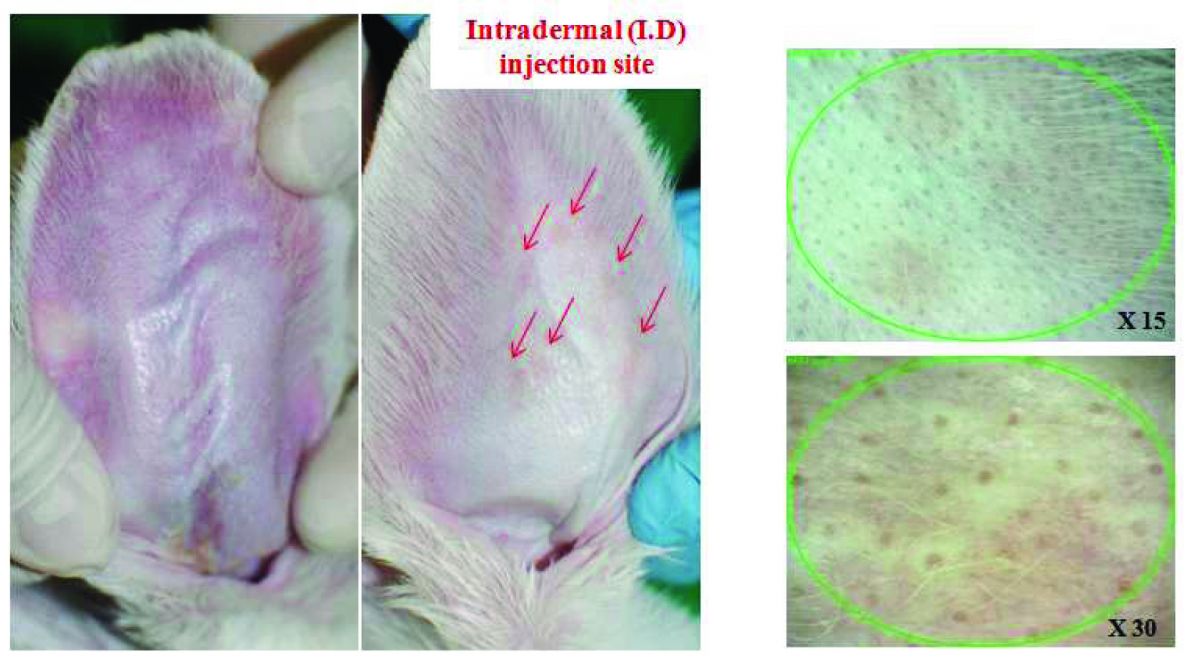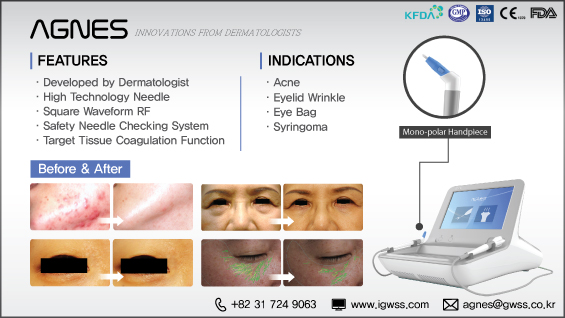Originally, Dr. Kobayashi pioneered permanent hair removal treatment using insulated microneedles. But the following reasons led him to also develop selective destruction of sebaceous glands for treatment of acne.
First, he had profound anatomical understanding of hair follicles due to his research on permanent hair removal. When he first developed insulated microneedle hair removal, Dr. Kobayashi had to accurately locate the hair roots. However, in the 80s, the exact location of the root of the hair was not clearly understood. It was generally assumed that dermal papilla at the base of the hair shaft were hair roots. However, the DPC was found to be different from the root of the hair. It was found that hair stem cells at the bulge area attached to the arrector pili muscle. Interestingly, before all these discoveries were made, Dr. Kobayashi successfully identified the right length of the insulated and non-isulated parts of the needle for permanent hair removal through countless experiments in his own arm and leg hair. I believe such efforts of his contributed greatly to his development of selective destruction of sebaceous glands. Accurate knowledge about follicle anatomy was necessary for developing a new concept of selective destruction of sebaceous glands.
Secondly, Dr. Kobayashi became interested in applying selective destruction of sebaceous glands to acne because of the sweeping changes of the aesthetic market in the late 90s.
Various laser devices offering painless and quick hair removal treatments pushed the insulated needles out of the market and forced him to think of a new indication for the insulated needles. This change in the market demand led him to extensively research acne. In 2007, he published 5 years of his research on acne and in his paper ‘Selective electrothermolysis for sebaceous gland’ in Journal of Dermatologic Surgery.

Figure 1. Animal study; Acne was induced in rabbit ear inner flap and treated with AGNES.
Conditions for destroying sebaceous glands in acne
His study published in 2007 examined destruction of sebaceous glands in healthy individuals and not in acne patients. He performed treatments in the cheek area and described the results of histological examination following destruction of normal sebaceous glands. He concluded that it was possible to selectively destroy sebaceous glands without damaging the epidermis and upper dermis. As this study did not examine patients with acne, the parameters cannot be said to be ideal for acne treatments. As the sebaceous glands are enlarged in acne compared to healthy skin, simply heating the pores would not effectively destroy enlarged sebaceous glands.
[Advertisement] AGNES(Radio Frequency) – Manufacturer: (www.igwss.com)
He had to revise his treatment protocol. He found that draining the excess sebum and inflamed waste from follicles before selectively destroying sebaceous glands with AGNES was much more effective. Additionally, giving two shots to the center of the follicle and additional shots in the surrounding tissues was more effective in thermally destroying the lateral lobules of the enlarged sebaceous glands than delivering energy only to the follicle center.
After Dr. Kobayashi’s passing, I took over development of AGNES and established new protocols of various indications by researching various aspects of the treatment such as appropriate needle lengths, etc. Simultaneously, I also researched the possibility of combining RF with insulated needles. I did not know what level of energy should be used in sebaceous glands for effective acne treatment before I became involved in developing AGNES. I was not interested in the mechanistic aspects of the device.
-To be continued





















